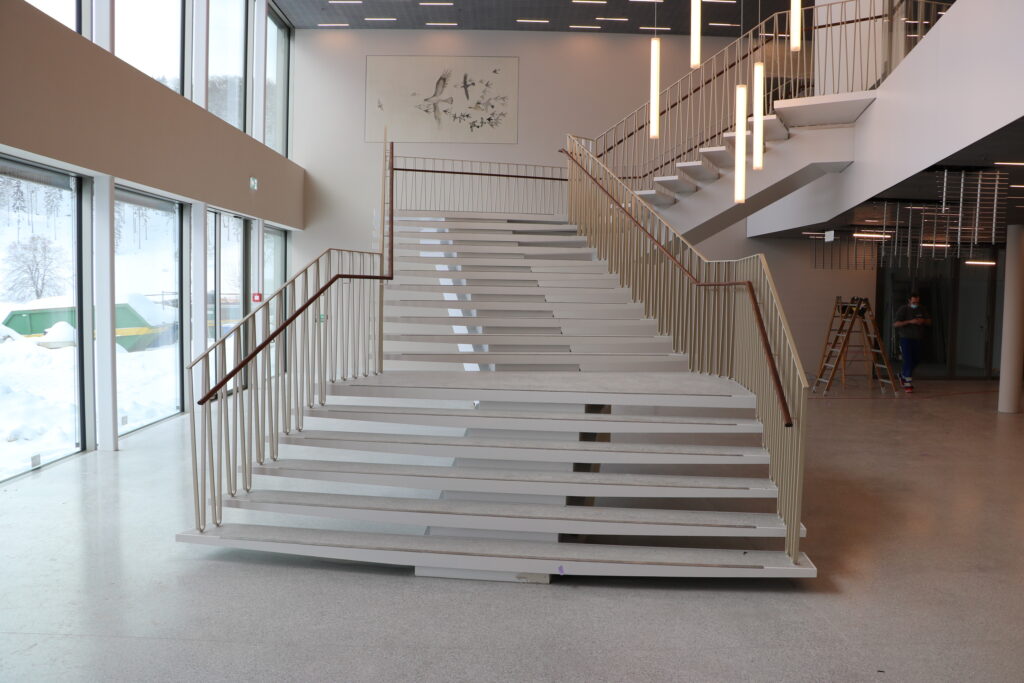Railing
Metal railings are not only a key safety element, but also contribute significantly to the aesthetics of a building. When planning and constructing a metal railing, several technical aspects play a decisive role in ensuring functionality and durability.
An important point is the geometry of the railing. Both the height and the arrangement of the stakes or fillings must comply with the applicable standards to ensure the safety of users. The height of the railing must be sufficient to provide safe protection against falls.
The statics of a metal railing is another decisive factor. Every railing must be designed to withstand the required loads, whether from people leaning on it or from wind loads in outdoor applications. Incorrect dimensioning can lead to a safety risk.
The surface treatment of metal railings also plays an important role, particularly with regard to protection against corrosion. Particularly in outdoor applications, railings are regularly exposed to the elements such as rain, snow or UV radiation. To maximize corrosion protection, a process called duplexing is often used, in which the metal is both galvanized and coated. However, unevenness in the surface of the metal, for example due to weld seams or machining, can make it difficult to apply the coating. Careful preparation of the surface is therefore essential to ensure an even and resistant protective layer.
Fixing the railing in the concrete is another crucial point. Special anchors or dowels are often used, which are set into the concrete to ensure a secure and permanent fixing. The correct axial dimensions, edge distances and depth of anchoring must be adhered to in order to achieve maximum load-bearing capacity.

Facts & Figures
Experts and expert opinions
- Expert reports and appraisals
- Mediation



Our offer at a glance
We offer the following engineering services.
Further projects
We are engineers with in-depth knowledge in the fields of glass, façade, steel and metal construction. Our basic training is in craftsmanship, which allows us to think practically.

get to know us
We are engineers with in-depth knowledge in the fields of glass, façade, steel and metal construction. Our basic training is in craftsmanship, which allows us to think practically.
Thanks to our further training in engineering, business management, welding technology and energy, we are able to optimize our solutions. We are constantly training ourselves and are familiar with the latest standards, laws and developments.




